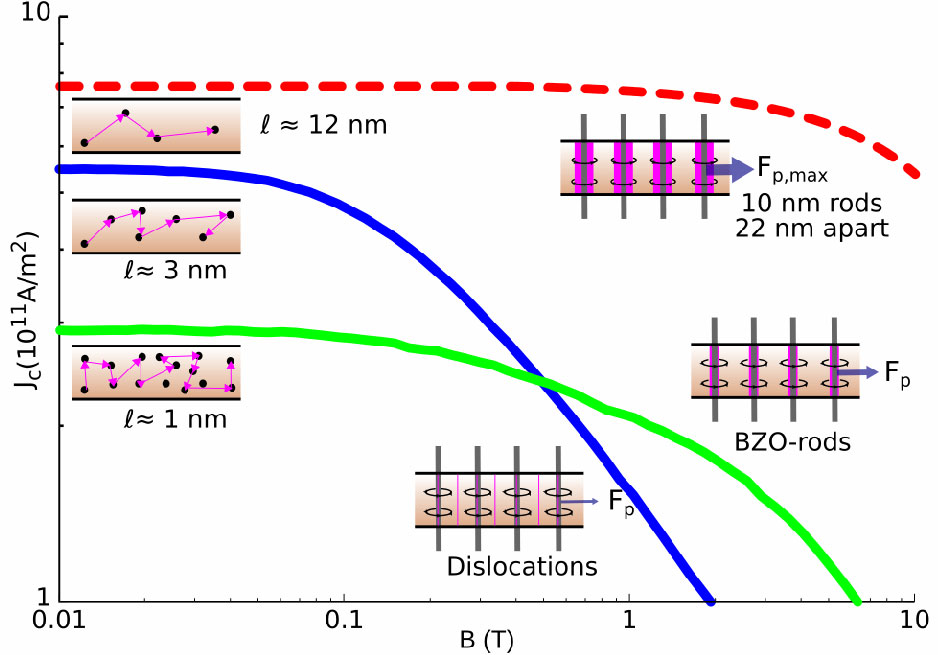PC-11-1-INV
Enhancing Jc(B) by Optimizing the Crystalline Structure of the YBCO Matrix Surrounding Artificial Pinning Sites
14:30-15:00 30/11/2023
*Petriina Paturi1, Moe Moe Aye1, Elmeri Rivasto1 and Hannu Huhtinen1, Nicholas M. Strickland2 and Arya Ambadiyil Soman2, Christian Notthoff3 and Patrick Kluth3
1. Wihuri Physical Laboratory, Department of Physics and Astronomy, 20014 University of Turku, Finland
2. Robinson Research Institute, Victoria University of Wellington, Lower Hutt 5010, New Zealand
3. Research School of Physics, Australian National University, Canberra, ACT 2601, Australia
Artificial pinning sites (APCs), such as BaZrO3 and BaSnO3, have been employed to enhance the critical current density (Jc) of superconducting YBa2Cu3O6+x (YBCO) thin films and wires. The most effective APCs are self-organized nanorods aligned along the c-axis of YBCO, which enhance Jc by immobilizing vortices when B || c. This augmentation improves the in-field Jc(B) but reduces the self-field Jc(0) due to increased strain and crystalline defects in the YBCO matrix. To achieve maximum overall Jc, optimization of both Jc(0) and Jc(B) is necessary [1].
One approach for studying the individual effects of APC pinning and crystalline quality of the YBCO matrix is through heavy ion irradiation to create the APCs. This method preserves the YBCO matrix, unlike in situ addition of nanorods. Irradiation generates highly c-oriented pinning sites, resulting in a distinct peak in the angular dependence of Jc. However, x-ray diffraction and magnetic measurements indicate the emergence of a new phase with a lower critical temperature (Tc), slightly different lattice parameters, and substantial strain. Remarkably, resistively measured Jc(0)s do not decrease with irradiation as they do with in-situ addition of APCs. This observation implies that current flows in the YBCO matrix as expected, while both the shape of the magnetically measured Jc(B) curve and the angular dependence of Jc indicate the presence of a significant number of c-oriented APCs. These findings align well with the aforementioned notion that the YBCO matrix determines Jc(0), while the pinning sites define Jc(B).
Previously, we proposed that a similar effect can be achieved using a multilayer structure, where an APC-free layer(s) controls Jc(0), while the APC layer(s) pin vortices at high magnetic fields [2]. It has been discovered that a simple double-layer structure with an APC-free layer at the bottom is the most efficient solution [3]. Experimentally,the relative thicknesses have been optimized in films on single crystal SrTiO3 to be 70% APC/30% APC-free layer, resulting at best in a 60% improvement in Jc at 40 K and 3-4 T.
[1] P. Paturi and H. Huhtinen, Supercond. Sci. Technol. 35, 065007 (2022)
[2] E. Rivasto, T. Hynninen, H. Huhtinen and P. Paturi, J. Phys. Cond. Mat. 35, 075701 (2023)
[3] E. Rivasto, M. Todorovic, H. Huhtinen and P. Paturi, New J Phys (submitted) (2023)
The Jenny and Antti Wihuri Foundation is acknowledged for financial support.
